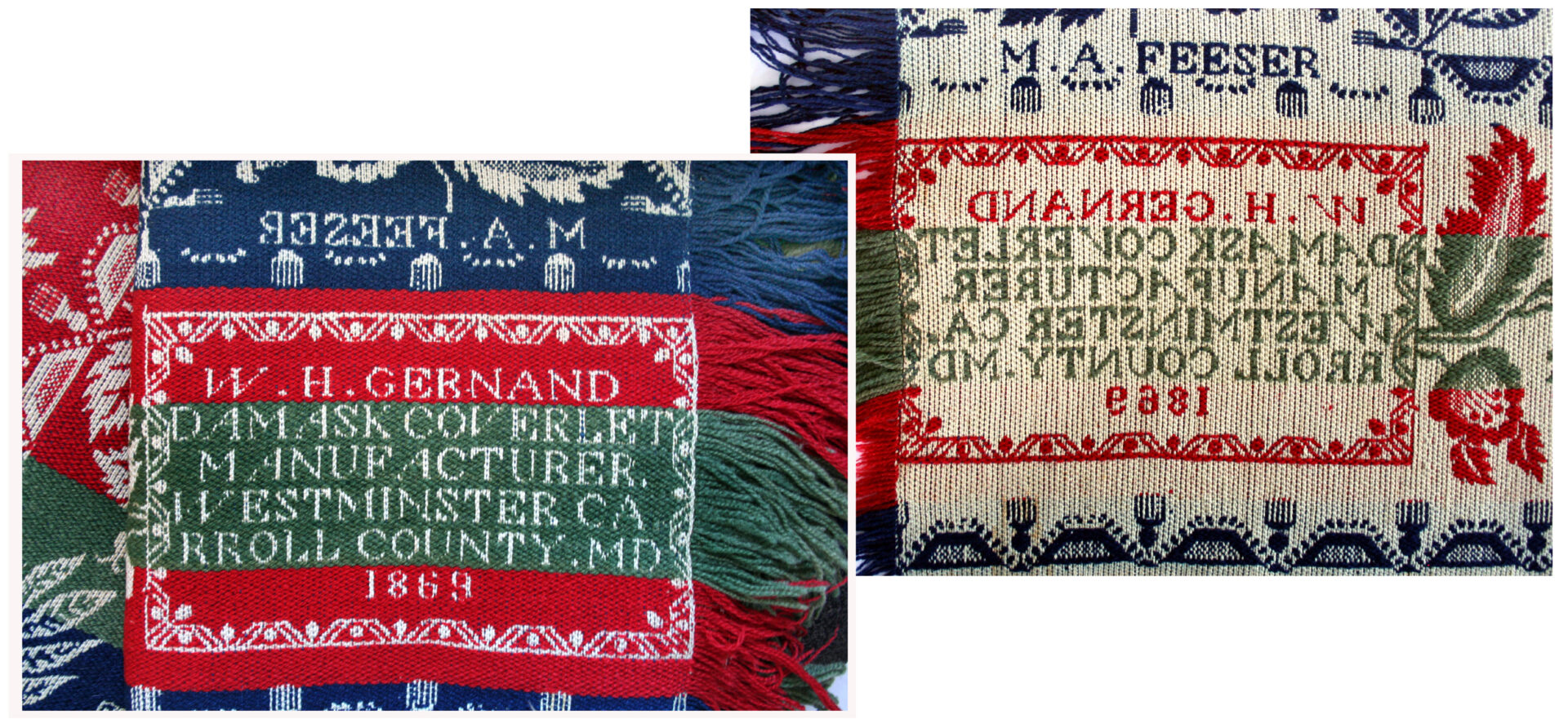Carroll Yesteryears
13 July 2014
Westminster the Home of 19th Century Weaver
By Mary Ann Ashcraft
I’m always amazed at the variety of craftsmen who lived and worked in Carroll County. There were potters, cabinetmakers, clock makers, joiners, blacksmiths, tinsmiths, and weavers, to name just a few.
From the 1850s to the late 1870s, Westminster was the home of William Henry Gernand, an accomplished dyer and weaver of carpets and coverlets, some of which are in the Historical Society’s collection and even at the Baltimore Museum of Art. Yes, Gernand was that good!
Undoubtedly, he learned the trade from his father, Jacob, a weaver who lived in Graceham, Frederick County. In 1850, William worked as a weaver at a Frederick County fulling mill, but by 1852 he was married and living in Westminster. His home at “The Forks,” where Pennsylvania Ave. and West Main Street veer off in different directions, still stands. It apparently also served as his shop.
Gernand bought the machinery and materials to begin his own weaving business from a Hanover, PA, weaver named Andrew Kump and continued using several of Kump’s coverlet designs. William’s brightly-colored coverlets were a combination of cotton and wool – rectangular in shape and two loom-widths wide. At roughly 80×84 inches, they fully covered a nineteenth-century double bed.
More than twenty coverlets exist with the W. H. Gernand corner block (see illustration). The majority of them also include the client’s name, so it is obvious Gernand often wove with a specific buyer in mind, someone who chose one of his three standard patterns for the center of the coverlet. Judging by the intricacy of that center design, the border, and the maker’s corner block, Gernand was a very accomplished weaver. There are no known examples of his woven carpets.
Exactly how he marketed his weaving isn’t entirely clear. Between June and December 1855, the early part of his career, he paid for an advertisement in the American Sentinel which mentioned that he was a dyer and weaver of coverlets but also made “plain and fancy” carpeting. I didn’t find his advertisements in newspapers of the 1870s, but by then his reputation would have been well-established. Clients probably visited his shop with specific requests for coverlets. As for the carpeting, that may have been sold by the yard either from his home or at a Westminster dry goods store operated by his uncle, Emanuel Gernand, who had been a weaver himself.
In May 1883, William Henry Gernand died just shy of his 60th birthday and was buried in Westminster Cemetery. He had been compelled to give up working as early as 1879 due to ill health. Perhaps exposure to the chemicals used in dying as well as years of inhaling cotton and wool fibers wreaked havoc on his lungs. Like other men toiling in cottage industries, he probably didn’t recognize the hazards of his work until the damage was done.
When the Historical Society’s Shellman House is open for tours, you can see an unsigned, but very typical, coverlet displayed on a bed there. It was a gift from the late Ober Herr, one of the Society’s very generous benefactors.
Mary Ann Ashcraft is a library volunteer at the Historical Society of Carroll County.
Photo credit: Historical Society of Carroll County

Photo caption: Weavers like William H. Gernand of Westminster often included a corner block on their coverlets to identify their work. In some instances, the name of the buyer was also added. These photos show both the corner block and owner’s name from a Gernand coverlet in the collection of the Historical Society of Carroll County.





